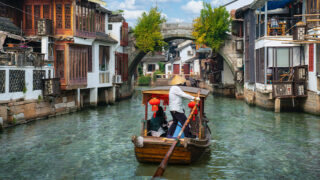Wondering where to go in Japan? There’s so much to do and see – and whether it’s taking in the cherry blossom, riding the bullet train, going to a festival, braving an onsen, eating street food or skiing in Japan, we’re sure you’ll love it. Here, we’ve compiled some travel tales and recommendations from readers and EL staff to help you plan your own trip. Plus, we’ve included a fact file for Japan, covering money, visas, weather, culture, the language … and even some advice for souvenir shopping!
Onsens in Japan
Traveller: Shamus Sillar
I was feeling smug after waking early and beating the other hotel guests to the first onsen session of the morning. There’s nothing like an entire piping-hot pool to yourself – especially after too much sake the previous night. I also impressed myself by following Japanese etiquette to a tee. After pushing through the vertical hanging curtains leading to the men-only onsen, I placed my clothes in the available basket, performed the rinsing-off ritual at the shower, then slid into the steaming 42-degree water.
Once sufficiently cooked, I rose from the water. At that point, I noticed another hotel guest – stark naked like me – approaching the pool. She (yep, she) gave a high-pitched yelp on seeing me. Then she raced back to her basket, grabbed her clothes and fled the scene. My initial thought was, “What on earth was that lady doing?” My second thought was, “Hang on. She’s Japanese. Why would a Japanese person come to the wrong onsen? Only a stupid foreigner would do that…”
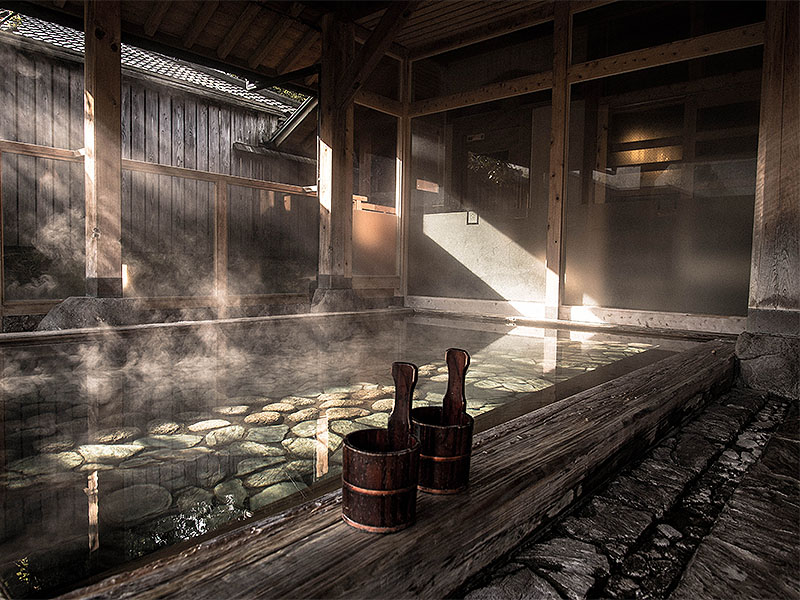
Surely, I hadn’t made a mistake? No – impossible. I’d been in this same onsen just the night before.
Holding cupped hands in a strategic position in case any other females decided to wander along, I tiptoed to my basket, quickly dried off, and threw on my clothes. Then I pushed through the curtains at the entrance. The woman, also clothed again, was standing against the wall. Seeing me, she bowed deeply several times, then slipped back through the curtains and into the onsen again.
And it was then I noticed the curtains themselves. They were red. The night before, they’d been blue. Blue is for men. Red is for women. It was a case of the ol’ “switcheroo”. Overnight, the hotel staff had rotated the male and female onsen areas. Presumably, this gives guests some variety in their bathing routines (a common procedure in Japan, I discovered later). I’d been in such a rush to get there first, I hadn’t noticed.
So, to the poor woman who stumbled upon a flabby, bearded, 40-something male in the female onsen at the Matsushima Century Hotel in northeast Honshu: Gomen’nasai. (I’m sorry!)
The bullet train and hotels in Kyoto and Tokyo
Traveller: Rebecca Bisset, British
When I asked my mum where she wanted to go for her 90th birthday, she said “Japan, to see Mount Fuji and go on the bullet train.”
Here are a few things I learnt about visiting Japan with an older traveller. Although public transport is fantastic, especially the trains, the stations are fairly large and busy, so try to travel off-peak and give yourself plenty of time. We ended up having to get a pretty expensive taxi ride from Osaka airport to Kyoto as I hadn’t realised the distance when I booked. The alternative was changing trains and getting a taxi, and that would have been too much for mum. (Note that normal taxis are much cheaper than the ones with English-speaking drivers, and they still seem to understand you and get you to where you need to go.)
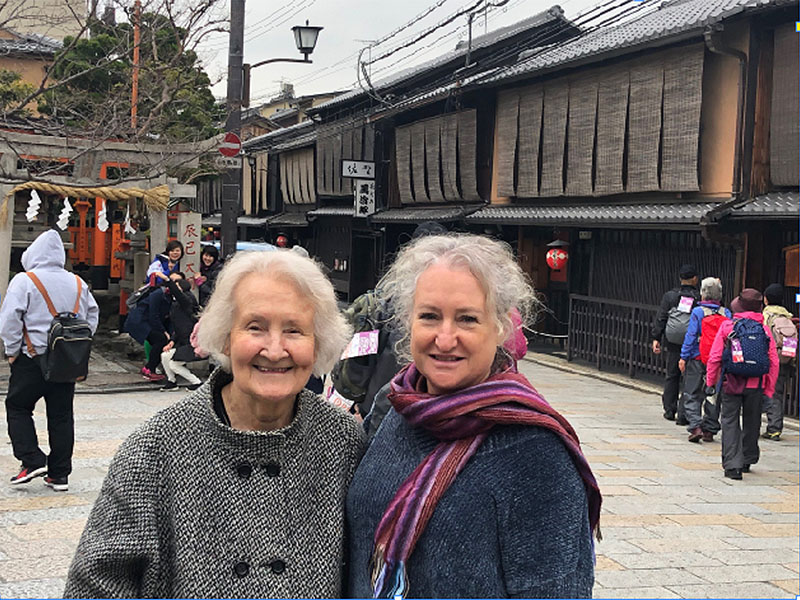
In Tokyo, many of the touristy suggestions on markets and fashion sectors didn’t interest her, and some, like the Imperial Palace, would have taken a lot of walking that she wasn’t up to. The hotels in Kyoto and Tokyo booked us a taxi driver to take us around for three hours to see as much as we could in that time, rather than trying to focus on one or two places that needed loads of walking.
Mount Fuji can be elusive; we unfortunately didn’t see it either on the train ride or from the special breakfast lounge at the hotel that looks to the mountain.
A wheelchair was provided at airports, hotels and some attractions, including Tokyo’s Yushukan War Memorial Museum and the Yasukuni Shrine, and it was fabulous. We covered a lot more ground that way and mum still got to get around and look at things.
We used these SLH hotels in Kyoto and Tokyo.
Where to go in Japan for sakura season
Traveller: Jacqui Young, British
On an Easter break in Japan – timed to coincide with the popular sakura (cherry blossom) season – we used Changi Recommends. This is a Singapore-based one-stop travel concierge that helps you prepare for overseas trips by offering an extensive range of services for you to pre-book.
For example, we made use of the extremely handy ChangiWiFi service, which allows you to access the internet anywhere and anytime with a portable router that connects up to five devices at one time. The router is small enough to slip into your pocket, and has eight to twelve hours of battery life, depending on usage. Rates start from just $4 per day. There are eleven Changi Recommends counters across Changi’s four terminals, open 24 hours a day, seven days a week, where you can collect your device en route to your flight.
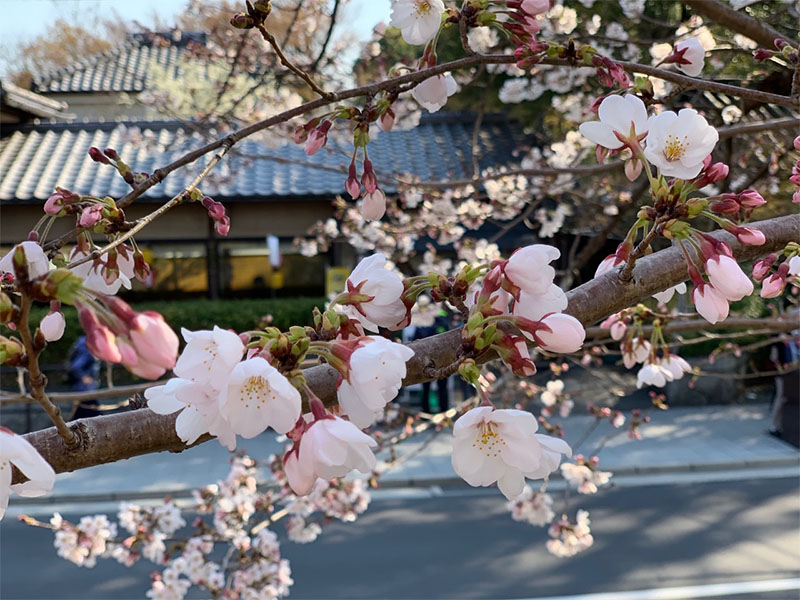
The booking of our Japan Rail tickets was very easy, too; we were able to buy the JR exchange orders in advance, which we simply activated at any JR Rail ticket outlet in Japan when we were ready to travel. We opted for the seven-day pass that gave us the convenience of travelling on trains to cover our amazing journey from Tokyo to Osaka, then to Kyoto, and back to Tokyo. We had dreams of chasing the sakura route, and it fit perfectly with our dates. The spectacle of the cherry blossom didn’t disappoint – it’s just stunning.
JR passes also include travel on the Hello Kitty-themed bullet train, which travels on selected routes on certain days; for example, you can hop onto the Hello Kitty Shinkansen to explore the less-known San’in region in southwest Honshu, with the JR Sanyo San’in Area Pass.
We also pre-purchased tickets to must-see theme parks Universal Studios Japan (Osaka) and Tokyo Disneyland. This meant we conveniently received e-tickets for both. At Universal Studios, we scanned our tickets at the gate, avoiding the school holiday queues. For Disney, we were allocated a meeting point near the entrance to convert the voucher to a physical ticket.
Experiencing the Takayama Sakura Festival
Traveller: Melinda Murphy, American
If you want to truly immerse yourself in Japanese culture, check out the Takayama Sakura Festival (aka the Sanno Festival). For four hundred years, thousands of onlookers have turned up in Takayama to see the highly-decorated carved wooden floats. There are two processions. The daytime one sees people dressed in native costumes pulling the incredible structures through the old town. The streets are also lined with cherry blossoms. The whole thing repeats itself at night, with the floats decorated with glowing lanterns, adding to the charm.
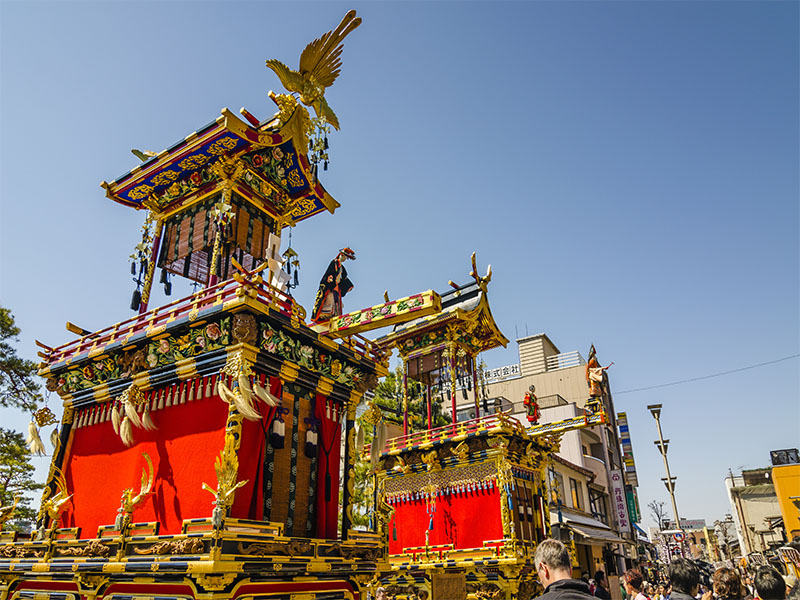
When we went, there were very few non-Japanese in sight. It’s truly a glimpse into Japanese culture that most Westerners may not get to experience. The city itself is nestled in the mountains and the old town really does feel like it must have been there since centuries ago. There’s also fabulous food and upscale shopping. In the autumn, there is a sister festival. Go – it’s magical!
Where to go in Tokyo and Hakone
Traveller: Lindsay Yap, Singaporean
My family and I visited Tokyo in November. We stayed in Shinjuku, which is full of malls, shops and great restaurants. It was loads of fun exploring Takeshita Street in Harajuku where we snacked on cotton candy, tornado potatoes, crepes and choux. If you want to escape the crowds, head to Shinjuku Gyoen National Garden. This serene city park has three types of gardens: traditional Japanese, French and English landscape.
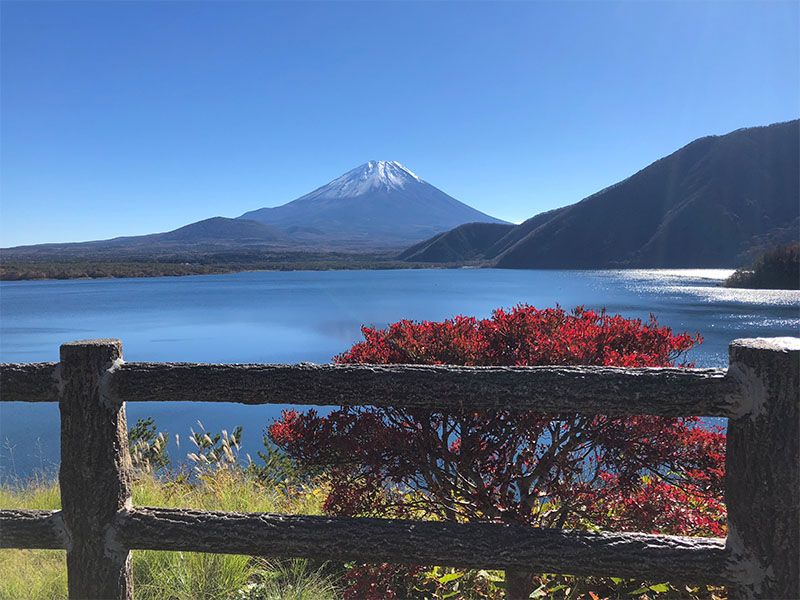
We also made a trip out of the city to see Mount Fuji in Hakone. It’s about two hours away from Tokyo. I highly recommend taking the round course that takes you on five modes of transportation. (Train, cable car, ropeway, boat and bus!) Places you’ll visit along the way include Lake Ashi, Öwakudani (an active volcanic crater) and Gora Park (a French-styled garden with a lovely café). Get the Hakone Free Pass that gives you unlimited access to transportation around the area.
While you’re there, drop by the Fuji Five Lake region. We were fortunate enough to catch beautiful views of the mountain!
Skiing in Japan – Niseko
Traveller: Rebecca Bisset, British
I loved my first winter experience of Japan! We stayed in Hirafu in Chalet Ivy right at the base of a ski slope. I stayed in a large one-bedroom apartment with a living area. It’s lovely and warm inside and the bathroom has an automated toilet lid; what else do you need? Also, while you eat breakfast, you’ll be able to watch the skiers in action!
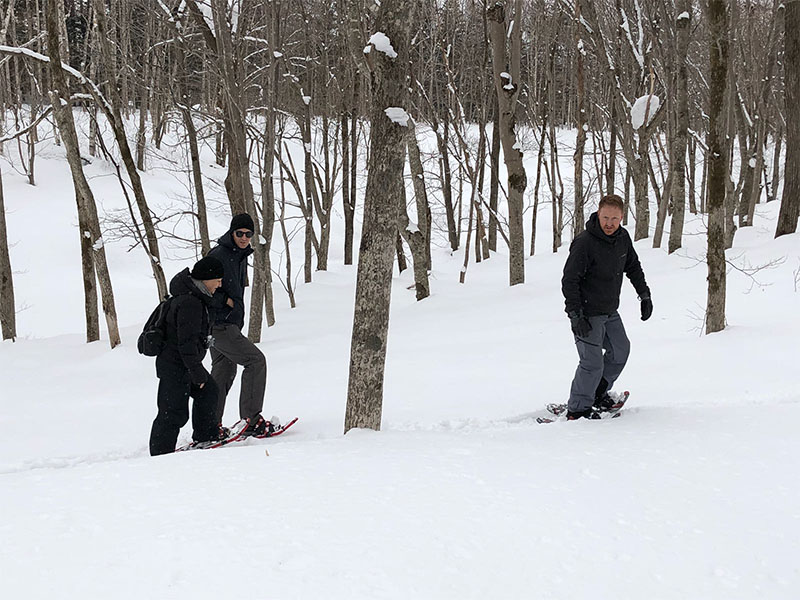
At night, there are lots of lovely bars and restaurants to explore. We tried Bang 2 for gyoza and ramen, and we went to the posh and clubby Powder Room and Bar Gyu. We also snow-walked and rode snow bikes with Explore Niseko, experienced Yukichichibu Onsen and visited a shrine. The whole area is really on the up, and one development to keep an eye on is The Ginto Residences by Pavilions, where you can own a freehold home. It’s brilliant if you’re big on skiing, but there are also plenty of things to do all year round. October is when all the autumn colours are out and I’m sure it’s just as beautiful as winter. I’m so impressed with the scenery, but also the food, service and people.
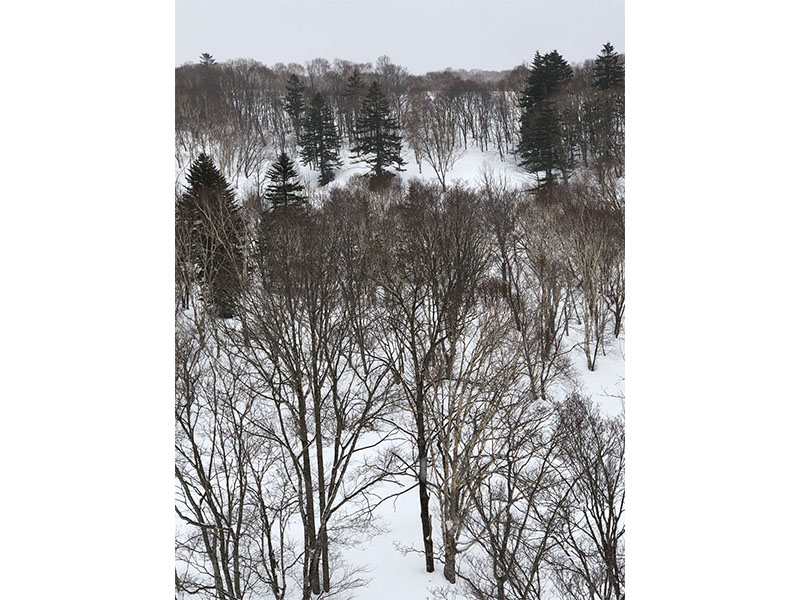
Where to go in Japan – Kyushu
Traveller: Lindsay Yap, Singaporean
A family friend previously went on a road trip to Japan’s third largest island and had so many great experiences that we just had to try it for ourselves! We flew into Fukuoka, picked up a car and scooted off to Nagasaki, about two hours away. From there, we headed to Mount Unzen and enjoyed snow-capped views aboard the ropeway.
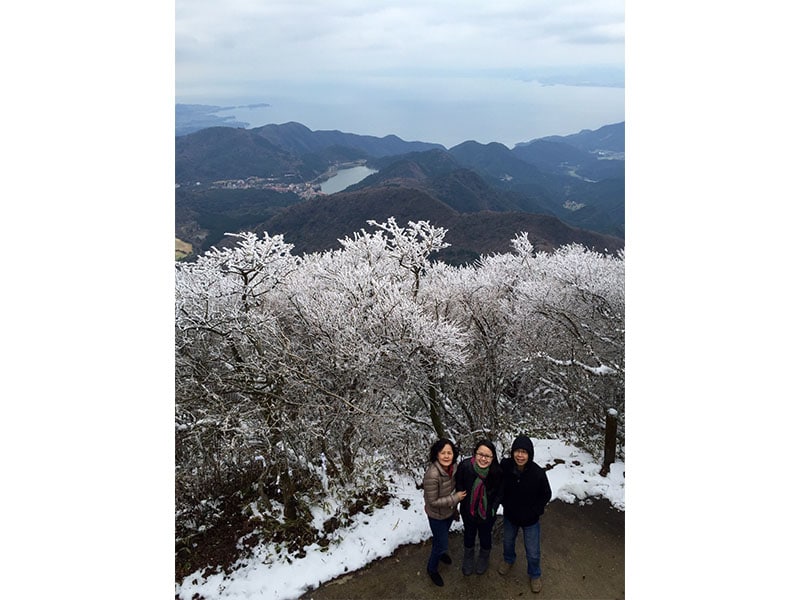
One of the coolest parts of the trip was taking the Ocean Arrow Ferry from Nagasaki to Kumamoto Prefecture – you can drive your car on! Our trip also brought us south to Kagoshima, through Miyazaki and north to Oita. We visited various parks and attractions, including Kumamoto Castle, Kirishima Shrine, Takachiho Gorge, the hot springs (or “Hells”) of Beppu and Aso Kuju National Park (home to a live volcano!) – and, of course, we had loads of great food! A highlight was staying at Aso-Uchinomaki Onsen Sozankyo, a quaint ryokan in Kumamoto. We had a Japanese-style room and slept on the floor on comfy futons. We also enjoyed the onsen (guests have access to private ones) and a traditional Japanese breakfast.
If you’re planning to drive, make sure you’ve got spare change for the tolls. And note that the rest stops have pretty decent soft serves, snacks and hot meals that’ll keep you happy along your drive.
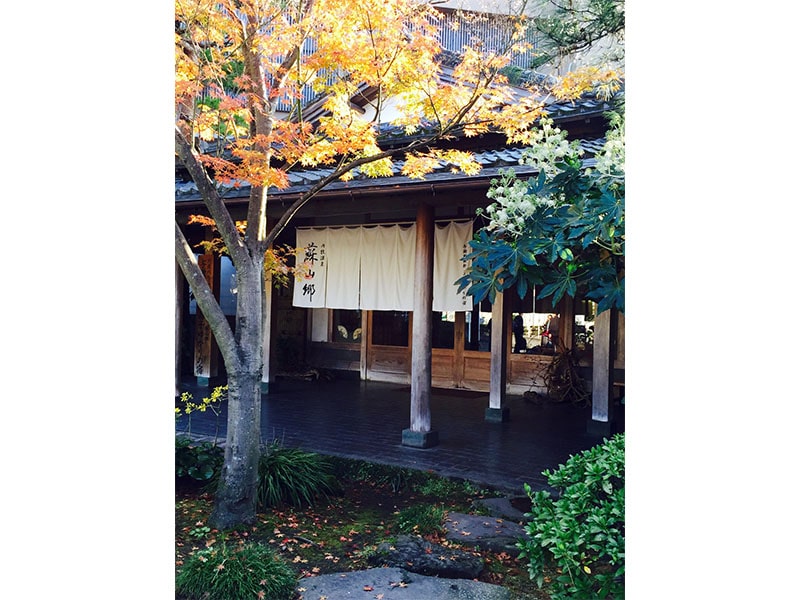
Where to go in Japan – Tohoku
Traveller: Shamus Sillar, Australian
You’ll know the host better from her riotous Ab Fab days, but if you get a chance to watch Joanna Lumley’s travel series on Japan, don’t miss it. In episode one, Joanna travels through the Tohoku region of northeast Honshu, and one scene resonated heavily with me. Exploring the ancient forests of Dewa Sanzan, she comes across one of Japan’s “National Treasures”, the majestic five-storey pagoda of Haguro.
Her reaction on first glimpsing it was identical to mine: a sharp intake of breath, a mumbled “wow!” and lots of craning of the neck to see to the top. This 700-year-old structure is made entirely of timber – no nails hold it together – and its remote location make it one of Japan’s more incredible sights. Adding to the enjoyment, I think, is the fact that the region isn’t easily accessible, so tourist numbers are low. (We all love thinking we’re the only ones to see a place, right?)
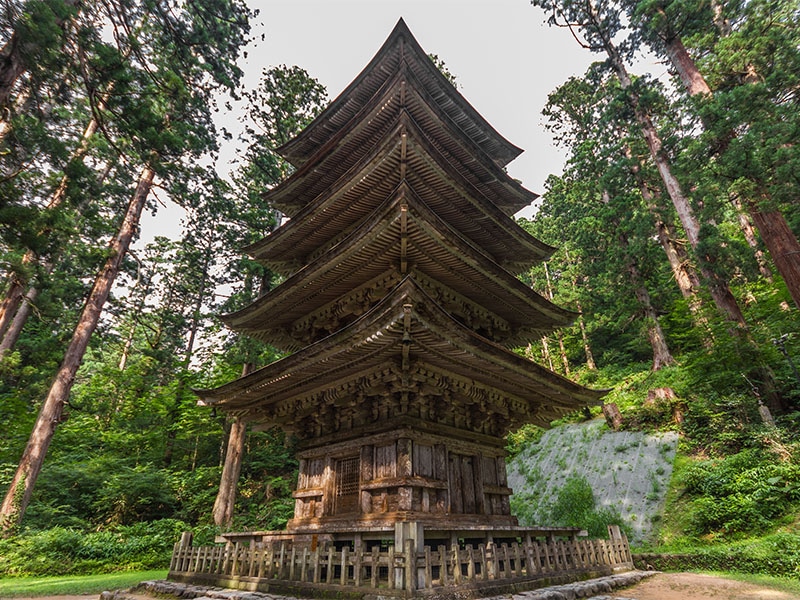
My day just got better after the pagoda visit: I climbed 2,446 ancient stone steps to the summit of Haguro, where I spent the night in a thatched-roof lodge attached to a temple, and had a dinner consisting of ingredients “foraged” from the mountainside that afternoon by the temple’s priests.
The easiest way to see this part of Japan is with a specialised travel group; one of these is Walk Japan, whose nine-day “Basho Tour” follows in the footsteps of the country’s greatest poet, Matsuo Basho, and includes a night on Haguro.
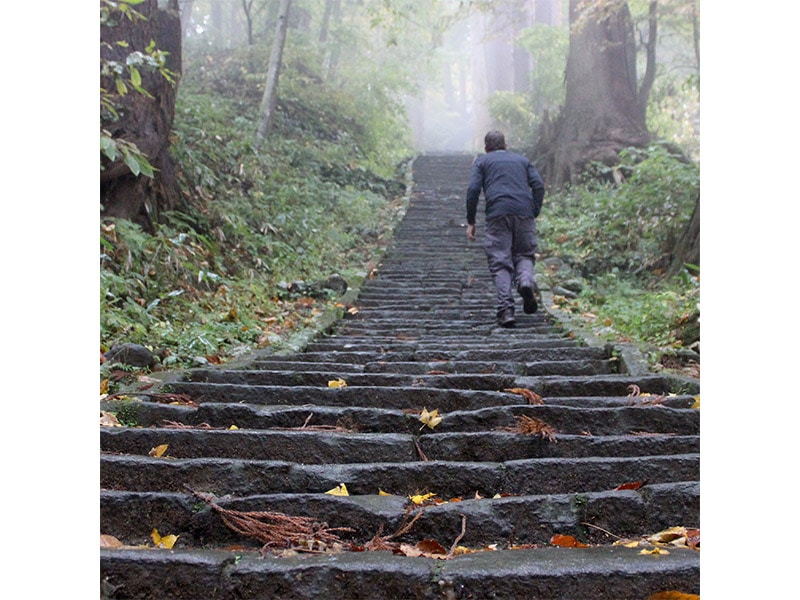
Skiing in Japan – Hakuba
Traveller: Emily Finch, British
To get to Hakuba, fly into Narita or Haneda and hop on the Nagano Snow Shuttle bus. It’s way easier than the bus-train-bus combo! We stayed at The Ridge in Wadano – a super spot, but quite high-end as far as budget goes. It’s right by the ski hire and ski school, and is walking distance to some fun bars and restaurants, yet still remains relatively quiet and secluded. Great for families, too. While there, you have to visit an onsen and see the snow monkeys! Oh, and book the kids into ski school. I’ve not ventured farther afield, but friends tell me that the other valleys surrounding Happo-one are worth trying out.
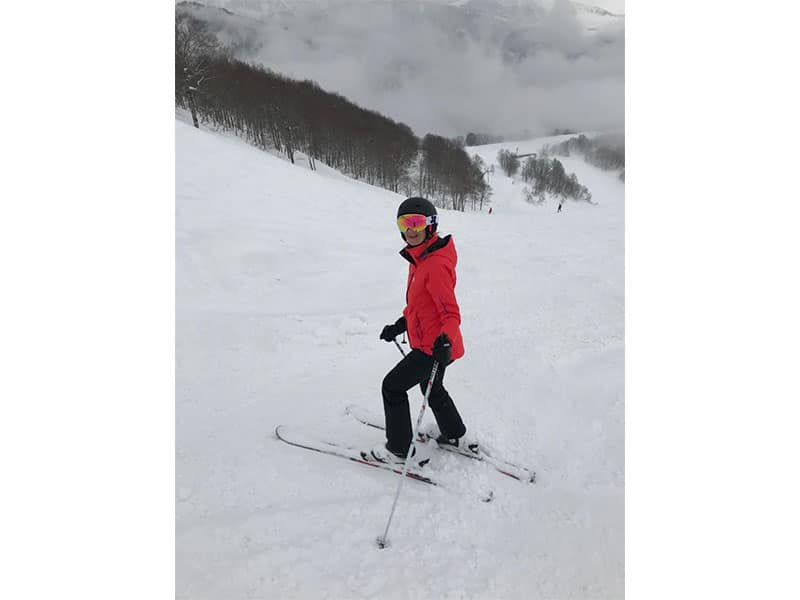
Skiing is the ultimate family holiday and the kids absolutely loved it. It was their second time. It’s important to have the right gear in Japan – lots of layers, good quality ski goggles, warm socks and mittens. Other tips: Bring snacks for the brood, some dry pasta and a few tubs of pesto in your suitcase; if they’re not into Japanese food, it’ll be rather limited and the supermarket is tiny and pricey!

My favourite memory is seeing the children coming down the ski slope at night! There’s something magical and exciting about skiing after dark, as long as the piste is well-lit, which this one was.
Traveller: Susan Knudsen-Pickles, Danish
My family travelled to Hakuba, which is an hour away from Nagano. I’ve been boycotting a skiing trip for the last 10 years because I’m not a good skier (in fact, I can’t ski at all!), it’s too cold (I’m more of a tropical holiday kind of girl) and it’s expensive. My husband, on the other hand, is a fantastic skier and loves the snow. So with our kids being a little bigger now (five and eight years old), I thought it was time.

Since we had a lot of luggage and ski gear, we opted for a van pick-up from Narita. It took about three-and-a-half hours to get to Hakuba, with one hot ramen stop along the way. We stayed in The White Horse Hotel, a cosy hotel with super-friendly staff. The hotel has everything you need, including an onsen. It’s just four minutes from the slopes and the staff can drive there and pick you up whenever you like. Besides skiing, check out the restaurants along Echoland.
My kids have never tried skiing before so we enrolled them at Evergreen International Ski School. They had so much fun! Hakuba is a fantastic place for beginner skiers and the snow was incredible – I’ve never seen so much snow. One of the best times I had was having lunch dates with my husband James at the little ramen house below the beginner slope. I also had a great time building snowmen and skiing with my girls.
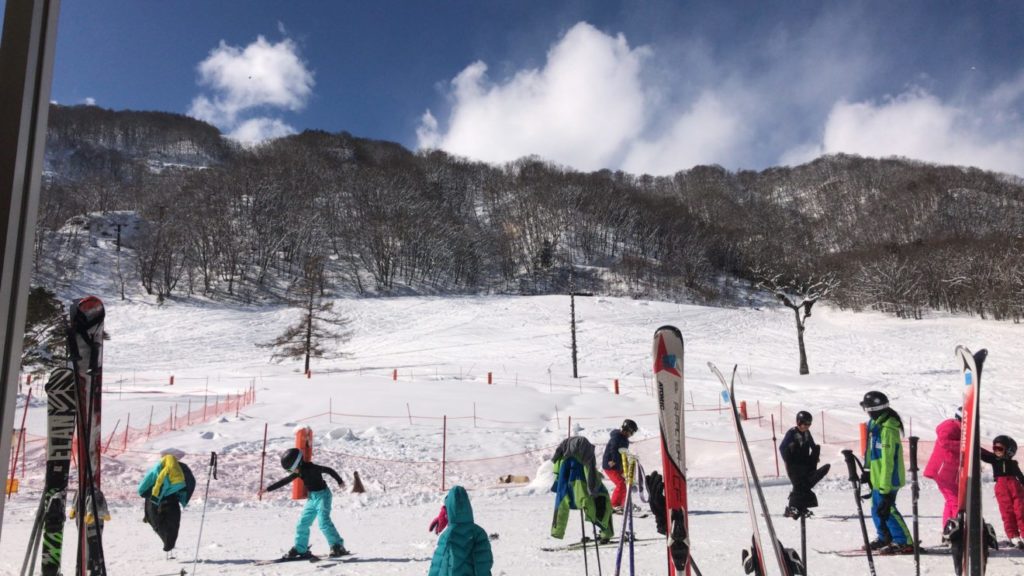
# JAPAN TRAVEL TIPS
The basics
Population: 125 million
Capital: Tokyo
Religion: Shinto and Buddhism
Emergency number: 119

Some trivia
- Japan’s literacy rate is almost 100 percent.
- On average, around 1,500 earthquakes strike the island nation every year.
- Japanese construction company Kongō Gumi was in operation for a world-record 1,400 years, until it became a subsidiary of another company in 2006.
- In Kamikatsu, a zero-waste village in Japan, rubbish is sorted into 34 different categories with all food waste used for compost.
- Tsukiji market in Tokyo is the largest fish market in the world.
Key dates
- 1 January: The most important holiday in Japan. “Year forgetting” parties are held to leave the old year’s troubles behind, houses are cleaned, and relatives visit.
- 11 February: National Foundation Day, celebrating the crowning of the first Japanese emperor in 660 BC.
Hot spots and itineraries
Popular destinations include Tokyo, Kyoto, Sapporo, Yokohama, Nagasaki, Osaka, Okinawa, Fukuoka and Niseko. There are 20 World Heritage Sites, including Mt Fuji, the Hiroshima Peace Memorial and also the historic monuments of Kyoto.
Some itinerary ideas
- Honshu: Tokyo – Osaka – Kyoyo
- Kyushu: Fukuoka – Nagasaki – Aso – Beppu – Yufuin
- Hokkaido: Sapporo – Asahikawa – Furano – Tomakomai
Staying safe and healthy
There is an ongoing risk of earthquakes and tsunamis in Japan, so it’s best to familiarise yourself with the safety procedures of where you are staying, just in case. Check www.jma.go.jp/jma/indexe.html to keep updated.
Cultural things
While you’re there, please don’t…
- Blow your nose in pubic; it’s considered rude.
- Use the term “chin chin” when making a toast; in Japanese, this expression refers to the male genitals.
- Forget to learn the characters for “male” and “female”, unless you want to walk into the wrong room full of naked people in a hot spring (onsen). (This is from the personal experience of an Expat Living editor!)
Before you go, read …
- Any book by Haruki Murakami
- Kitchen by Banana Yoshimoto – about mothers, love, tragedy and the power of the kitchen in the lives of free-spirited young women in contemporary Japan.
- The Roads to Sata by Alan Booth – an account of the author’s journey, in 1977, through Japan on foot
Before you go, watch …
- Godzilla – conceived as a metaphor for nuclear weapons, the 1954 film has Godzilla leave a trail of destruction on the streets of Tokyo.
- Lost in Translation – Sofia Coppola’s classic rom-com/drama features Bill Murray as an ageing film star and also Scarlett Johansson as a neglected wife. Many scenes are set in the Park Hyatt Tokyo.
- Spirited Away – 2001 fantasy film that won Best Animated Feature at the Oscars and held a Japan box-office record for 19 years.
They said it
“Juu-nin to-iro” (“10 people, 10 colours”) – Japanese saying, akin to “different strokes for different folks”
“When you look at Japanese traditional architecture, you have to look at Japanese culture and its relationship with nature. You can actually live in a harmonious, close contact with nature – this is very unique to Japan.” – Tadao Ando
“No one will understand a Japanese garden until you’ve walked through one, and you hear the crunch underfoot, and you smell it, and you experience it over time. There’s no photograph or any movie that can give you that experience.” – J. Carter Brown
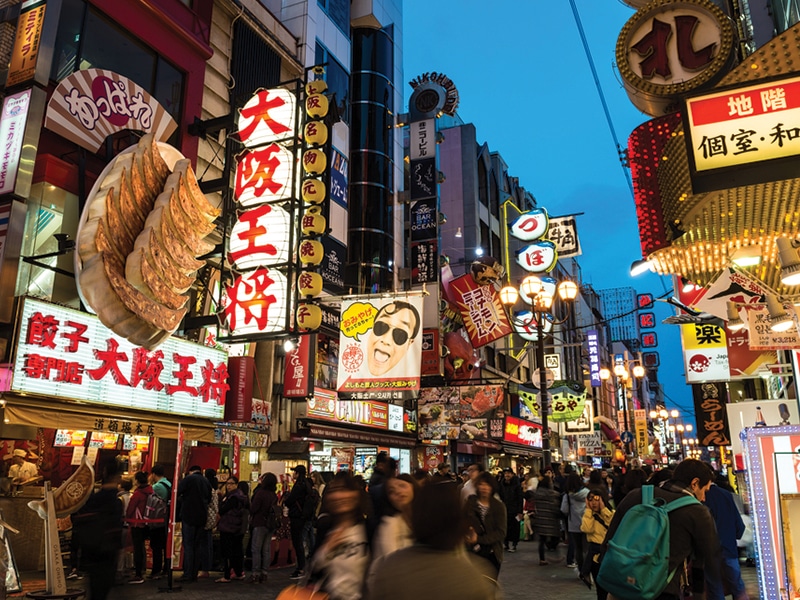
Important questions
Do I need a visa?
Presently, citizens of 70 countries, including Australia, New Zealand, Singapore, France, Germany, the UK, Canada and the US do not require a visa to visit Japan. Stays are generally allowed for up to three months at a time. Visit the Ministry of Foreign Affairs website for more information.
What time is it in Japan?
Japan is 9 hours ahead of GMT, 1 hour ahead of Singapore, and 3 hours ahead of Sydney.
What’s the money situation?
The official currency in Japan is the Japanese yen (JPY). Many ATMs in Japan do not accept foreign cards and credit card use is also limited so it’s advisable to carry sufficient cash. Cash withdrawals are possible at ATMs at post offices and 7-Eleven stores. Banks and post offices will exchange major foreign currency and travellers cheques.
When’s the best time to visit?
Late March to April is Sakura (cherry blossom season), a popular time to visit. June tends to be wet, while high temperatures and powerful storms can strike throughout July and August (with the exception of Hokkaido, mountaintop resorts like Hakone and the Japanese Alps). The autumn months of September to November are cooler and aesthetically beautiful. December typically kicks off the ski seasons in the north. Snow-covered landscapes in Japan are lovely, yet obviously very cold.
What’s the lingo?
Japanese. Here are some phrases to get you started:
- Hello: Konnichiwa
- What is your name? Anata no namae wa nan desu-ka
- My name is __ Watashi no namae wa __ desu
- How much? Dono gurai
- Thank you: Arigato
- Yes: Hai
- No, thank you: Ie, arigato
Last but not least
Is there anything I should know about meeting the locals?
Japanese people greet each other with a bow. For foreigners, a bow followed by a gentle handshake is acceptable.
What’s a must-try dish? Where do we start?
Japan is a culinary giant so it’s hard to single out one place to start; but maybe with ramen, a noodle soup combining a meat or fish broth flavoured with miso or soy, and served with a variety of toppings (depending on the region and the chef).
What should I buy as a souvenir?
Quirky snacks, yukata robes, wagasa (traditional Japanese umbrella made from paper and bamboo), cat-related paraphernalia.
Like this? Read more in our Travel section.

